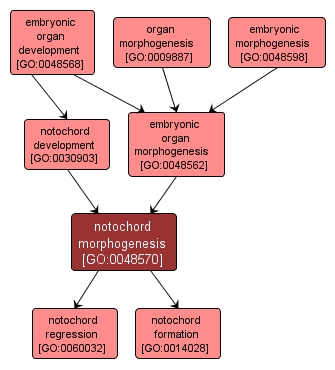| Desc: |
The process by which the anatomical structures of the notochord are generated and organized. Morphogenesis pertains to the creation of form. The notochord is a mesoderm-derived structure located ventral of the developing nerve cord. In vertebrates, the notochord serves as a core around which other mesodermal cells form the vertebrae. In the most primitive chordates, which lack vertebrae, the notochord persists as a substitute for a vertebral column. |














